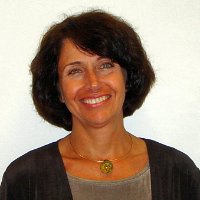 By Donna Cusano, Editor In Chief of Telehealth & Telecare Aware
By Donna Cusano, Editor In Chief of Telehealth & Telecare Aware
Twitter: @deetelecare
Twitter: @telecareaware
Aging2.0 OPTIMIZE, in San Francisco this week, annually attracts the top thinkers and doers in innovation and aging services. It brings together academia, designers, developers, investors, and senior care executives from all over the world to rethink the aging experience in both immediately practical and long-term visionary ways.
Looking at OPTIMIZE’s agenda, there are major themes that are on point for major industry trends.
Reinventing aging with an AI twist
What will aging be like during the next decades of the 21st Century? What must be done to support quality of life, active lives, and more independence? From nursing homes with more home-like environments (Green House Project) to Bill Thomas’ latest project–‘tiny houses’ that support independent living (Minkas)—there are many developments which will affect the perception and reality of aging.
Designers like Yves Béhar of fuseproject are rethinking home design as a continuum that supports all ages and abilities in what they want and need. Beyond physical design, these new homes are powered by artificial intelligence (AI) and machine learning technology that support wellness, engagement, and safety. Advances that are already here include voice-activated devices such as Amazon Alexa, virtual reality (VR), and IoT-enabled remote care (telehealth and telecare).
For attendees at Aging2.0, there will be substantial discussion on AI’s impact and implications, highlighted at Tuesday afternoon’s general session ‘AI-ging Into the Future’ and in Wednesday’s AI/IoT-related breakouts. AI is powering breakthroughs in social robotics and predictive health, the latter using sensor-based ADL and vital signs information for wellness, fall prevention, and dementia care. Some companies part of this conversation are CarePredict, EarlySense, SafelyYou, and Intuition Robotics.
Thriving, not surviving
Thriving in later age, not simply ‘aging in place’ or compensating for the loss of ability, must engage the community, the individual, and providers. There’s new interest in addressing interrelated social factors such as isolation, life purpose, food, healthcare quality, safety, and transportation. Business models and connected living technologies can combine to redesign post-acute care for better recovery, to prevent unnecessary readmissions, and provide more proactive care for chronic diseases as well as support wellness.
In this area, OPTIMIZE has many sessions on cities and localities reorganizing to support older adults in social determinants of health, transportation innovations, and wearables for passive communications between the older person and caregivers/providers. Some organizations and companies contributing to the conversation are grandPad, Village to Village Network, Lyft, and Milken Institute.
Technology and best practices positively affect the bottom line
How can senior housing and communities put innovation into action today? How can developers make it easier for them to adopt innovation? Innovations that ‘activate’ staff and caregivers create a multiplier for a positive effect on care. Successful rollouts create a positive impact on both the operations and financial health of senior living communities.
The best are not only innovating, but also rethinking their organizations to determine best practices, deliver care outcomes, manage risk in outcome-based risk-sharing care models, and retain staff. There’s also a movement on to use the wisdom and knowledge of older people as ‘modern elders’. Organizations and companies participating in this conversation are AgeWell Global, WelbeHealth, OnPointe Health, Encore.org, and Chip Conley of Airbnb.
Aging innovation has no borders—share the learning
Populations are aging worldwide to a degree unprecedented in history. Presenters at OPTIMIZE will be sharing technology, practices, and outcomes from Italy, Israel, Canada, Ireland, South Africa, and the UK. The concept of ‘tiny home’ Minkas originated in Japanese home design. Israel, an acknowledged leader in tech development, has a national R&D support and investment structure that helps tech startups move from concept to international scale rapidly. Canada is changing public policy to create an asset out of the challenges presented by aging, such as developing a social innovation lab and leveraging community action for entrepreneurship and mentorship. These insights and innovations will be shared during Wednesday’s breakouts and the closing Global Startup Search Finals.
An earlier version of this article is under this Editor’s byline on the CarePredict blog, where she is a contributor. It has been expanded for additional points of interest to Readers.
This post was originally published on TeleHealth & Telecare Aware and is republished here with permission.
